|
Getting your Trinity Audio player ready...
|
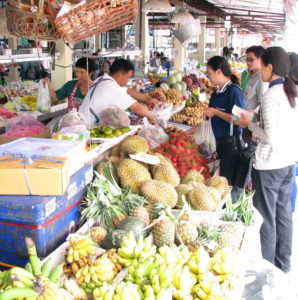
Is Thailand poor? The short answer is no, but there is poverty in Thailand. The abundance of natural produce that is readily available to the people of Thailand makes it is easy to forget, many rural Thai people, were caught in the poverty trap until things changed around 1980. Those people now represent 70% of the Thai population and are mainly farming families. Fresh food markets abound in the cities, towns and villages of Thailand, and they are always busy. The Thailand economy is robust. So, how did Thailand escape the poverty trap?
The Forty-year turnaround
The dramatic turnaround, from lack of food to plenty, took less than 40 years from 1980, It was partly a result of Thailand’s remarkable economic growth. And a testament to the determination of the Country and the farmers to avoid poverty and uplift the people. Unemployment in Thailand is very low at around 0.5%.
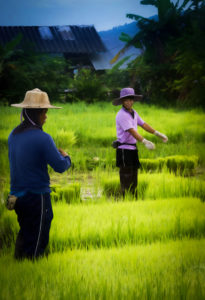
But I suspect a large number of those registered as unemployed make money on an ad hoc basis. Farm workers are typically versatile. Although they may not have had any formal skills training they can usually turn their hand to most practical tasks. It is quite normal in any village to be planting rice in your own farm one day and then putting the roof on your neighbour’s house the next.
What is the Poverty Trap?
When we talk about the poverty trap it is important to keep perspective and not confuse poverty with starvation. Although I’m sure there have been cases of starvation in Thailand in the past, there can be little or no excuse now. Starvation is rare in this land, where food is plentiful and sadly a lot is wasted.
You cannot go far without seeing a temple, and anyone who is homeless or hungry can seek shelter there. The monks will gladly share.
Poverty in Thailand and Fear of Starvation
Thailand has a population of roughly 70 million, of which less than 8% are officially below the international poverty line. But there is no fear of starvation.
However, Thailand’s neighbouring South-East Asian countries, Vietnam, Cambodia and Laos haven’t had it so good. Following the devastation and havoc wreaked on them because of the Vietnam War, they have taken longer to alleviate poverty.
In the ten years up to 1975, those countries had a far more difficult route to reducing poverty levels. They currently stand at: Laos 27.6% Cambodia 19.8% Vietnam 10.7% which is a great achievement.
And let us not forget Myanmar which has suffered from a long period of military dictatorship, which stands at 26%. Although this article was written some time ago it gives a good insight to why Myanmar is lagging behind.
Comparison with Africa
Since I moved to Thailand from South Africa I have been asked how different it is. There are some similarities. But The story all over Africa is a shortage of food, famine and starving families. Circumstances have made it impossible for them to avoid the poverty trap.
That has been the case for as long as I can remember. It is not the case in SE Asia, despite the ravages of the Vietnam war and the atrocities of the Khmer Rouge in Cambodia.
South Africa
The most advanced country in Africa – South Africa has an official population of 52 million (but is more likely 60+ because of illegal immigrants). South Africa’s poverty rate is a staggering 58.6% and unemployment stands at 25%.
I lived there between 1990 and 2008 and survived an armed robbery in my home, committed by three desperately poor young black men. The police never caught them, which is usual as they slip quickly back into the shadows of the Townships.
Daily, I witnessed abandoned children living on the streets of affluent Cape Town – starving, caught in the poverty trap.
On one side of Table Mountain (the Atlantic Seaboard), there is unimaginable wealth, and a few miles on the other side (the Cape Flats)there is unimaginable squalor, deprivation, poverty and gang warfare.

Violent Crime – unacceptable levels
It is hardly any wonder that violent crime is at unacceptable levels. Since the ANC came to power in 1994, I saw little if any improvement, as social malaise continued and the gap between rich and poor widened. If anything social unrest was worse than it was before 1994.
Thailand has not experienced such contrasts in modern history. And it has not endured serious conflict for a very long time, despite continual political disagreement which sometimes turns nasty. Living in Thailand, I realise how lucky I am to be in a peaceful, harmonious society with an abundance of food.
It is totally different from the exciting but knife-edged existence I had in South Africa for twenty years.
Thailand life in 1975 vs the twenty-first century
In 1975 most villagers lived in basic homes like this which were considered to be top quality. Others weren’t so lucky.
Many still live in the old wooden structures but they are gradually disappearing. Now you see more village houses like this one and even better.
Is Thailand Poor?
If a farmer had a bicycle in 1980 he was ‘cock of the north’. Now everyone, at the very least, has a bicycle and a motorbike and most families have a car. Every family has TV (though some may have been built by John Logie Baird himself). Even the old folk have mobile phones, and most places have access to the internet.
Some people in Thailand are poor, and it depends how you define poor. But Thailand as a country is by no means poor. However, as the younger generation shy away from farming more and more, what to do with farmland is becoming more of an issue.
What to do with the farmland
The following abstract from the Journal of Rural Studies – Volume 81, January 2021, Pages 37-46, sheds some light on the growing issue of ageing farmers and the reluctance of the next generation to carry on farming.
As Thai farmers get older they need to plan what to do with their farm business and land given younger people tend to out-migrate to urban areas and shift their interests away from farming. Such demographic trends may reduce agricultural productivity and increase food insecurity, both among farmers and in the region.
Using data collected through interviews with 368 farmers in the Prachin Buri province of Thailand, this research aims to examine how ageing is affecting farm activities of older farmers (60 years and older) and how they are adapting.
FINDINGS
We found that, while a small percentage of older farmers intended to continue farming without making any changes over the next five years (~9%), most were concerned about their health and farm work capacity, and were looking to leave farming and implement strategies to reduce both work intensity and time. Most farmers intended to stop farming and transfer farmland to their children (~40%), or continue farming while making some changes (~30%), such as employing additional workers or switching to less labour intense crops. Some intended to stop farming altogether and dispose of farmland outside their family (~21%; e.g. leasing out or selling or returning farmland to owner if leased).
As expected, the chosen strategy depended on personal (old-age income security and gender) and farm characteristics (e.g. successor, farm activities, and subsidy). Having a dedicated successor had a substantial impact on transferring land to the children, reflecting the importance of commitment for farming by the next generation, which will be challenging.
PENSIONS
A pension higher than the widely available old-age allowance could support farmers in maintaining a better living standard after retiring. However, only a fraction of farmers currently had access to a pension. Both short- and long-term policies are, therefore, needed to support elderly farmers, improve their living standards after retirement, and attract young people back to farming.
ParaJansuwanab Kerstin K.Zandera
a Northern Institute, Charles Darwin University, Darwin, NT, 0909, Australia
b Centre for Project and Programme Evaluation, Office of Agricultural Economics, Bangkok, 10900, Thailand
What is the poorest part of Thailand?
In the twentieth century, farming was exclusively driven by manual labour and buffalo. Buffalo are still used in Isaan, and much of the North-East, which is the poorest region, and the largest rice producing area in Thailand.
You will only occasionally see buffalo in the Northern provinces, where rice and many other crops are grown. Modern farm machinery particularly the versatile tractor has replaced the buffalo. Now trucks and pick-ups transport the produce to market, instead of buffalo and cart.
Equipment is not yet on the scale of modern farming elsewhere in the world, and in Isaan (North-East) much of the rice is still harvested by hand. It is a laborious and outdated process, but older farmers claim it preserves more rice and saves on wastage.
Crop rotation
Nowadays it is hard to imagine that the fertile crop rotation land of the North only yielded subsistence level rice and little else. Families had to go to the forest areas to find other food such as mushrooms, bamboo shoots, wild herbs and berries. Many still do, out of habit, as there is plenty growing wild (e.g. papaya, pag and herbs).
But now, all year round, farmers, with good irrigation and water flowing from the mountains, grow potatoes, corn, lamyai, papaya, coconut, banana, onion, garlic, carrot, several kinds of spinach (pag), beans, herbs and more. There are chicken and pig farms in most villages, so protein is always available in the plethora of markets all over the Country.
How strong is the Thailand economy?
Kirida Bhaopichitr PhD is research director for the International Research & Advisory Service, Thailand Development Research Institute (TDRI). The following is an abstract from her OPED in the Bangkok Post 23rd December 2020, which gives a good insight into the strength of the Thailand economy.
The Thai economy will grow in 2021 after contracting by almost 10% in 2020. It is expected to expand 3 to 4% from 2020. It will not be until the end of 2022 before the Thai economy returns to its pre-Covid level of 2019.
The recovery is contingent upon a rebound in tourism and exports. Should large-scale vaccination become available by June 2021, large, advanced economies such as the US, EU, Japan and China, which will be first to receive the vaccines, could start to recover by the second half of 2021 This would allow greater international tourism and exports for Thailand.
The government expects inbound tourism to be at around 8 million by the second half of 2021, well below 40 million in 2019.
Thailand’s exports to its major markets — US, China, EU, and Japan — will grow with the recovery of these markets. However, revenues from exports in baht terms will be below that of 2019 as the baht will remain strong at around 30 baht to the US dollar.
Small and medium enterprises have been particularly affected as they do not have sufficient liquidity to outlast the economic downturn. SMEs employ over 90% of workers in the non-agriculture and non-public sectors, or 13 million of the Thai workforce. Work hours of the Thai labour force have declined by almost 10% compared to 2019.
The latest TDRI research shows that more than half of farm household incomes are from non-farming activities such as remittances from their children and their off-farm season work in construction, restaurants, handicraft activities, etc. Incomes from these sources have fallen since the pandemic.
The public sector remains the only key engine of the Thai economy. The government has ample resources to spend in 2021. Only 30% of the one-trillion-baht loan 2020 has been disbursed. Together with the 2021 budget of the central government, local administration organisations, and state-owned enterprises, the public sector’s resources add up to more than four trillion baht (around 25% of GDP). Public spending and investments will need to speed up in 2021 to counter the negative impacts of the pandemic on SMEs and workers.
Oil prices, inflation, and interest rates will remain low. The price of oil will remain well below the price of $65 per barrel in 2019. With low oil prices and a slow recovery of demand in the country, inflation will remain below 1%. Similarly, interest rates will be close to zero as world interest rates will remain near zero until 2022.
KIRIDA BHAOPICHITR
TDRI RESEARCH DIRECTOR
Final Thoughts – Food is plentiful
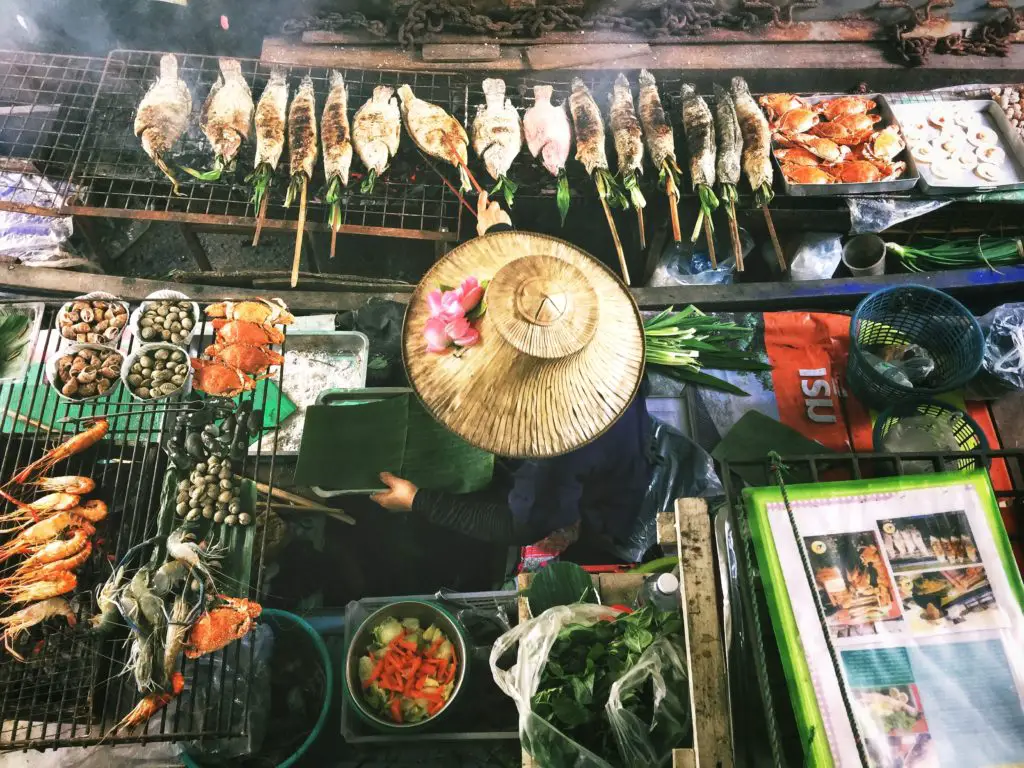
Rural people are physically strong into old age and continue to farm, albeit on a small scale. The official average age of a rice farmer is high at 55 which supports evidence that less of the young are following the family tradition. They are opting for the more glamorous and lucrative city life instead. The family system of support is still strong, and I see no signs of impoverishment in terms of a lack of food at any level. Let us hope the success continues.


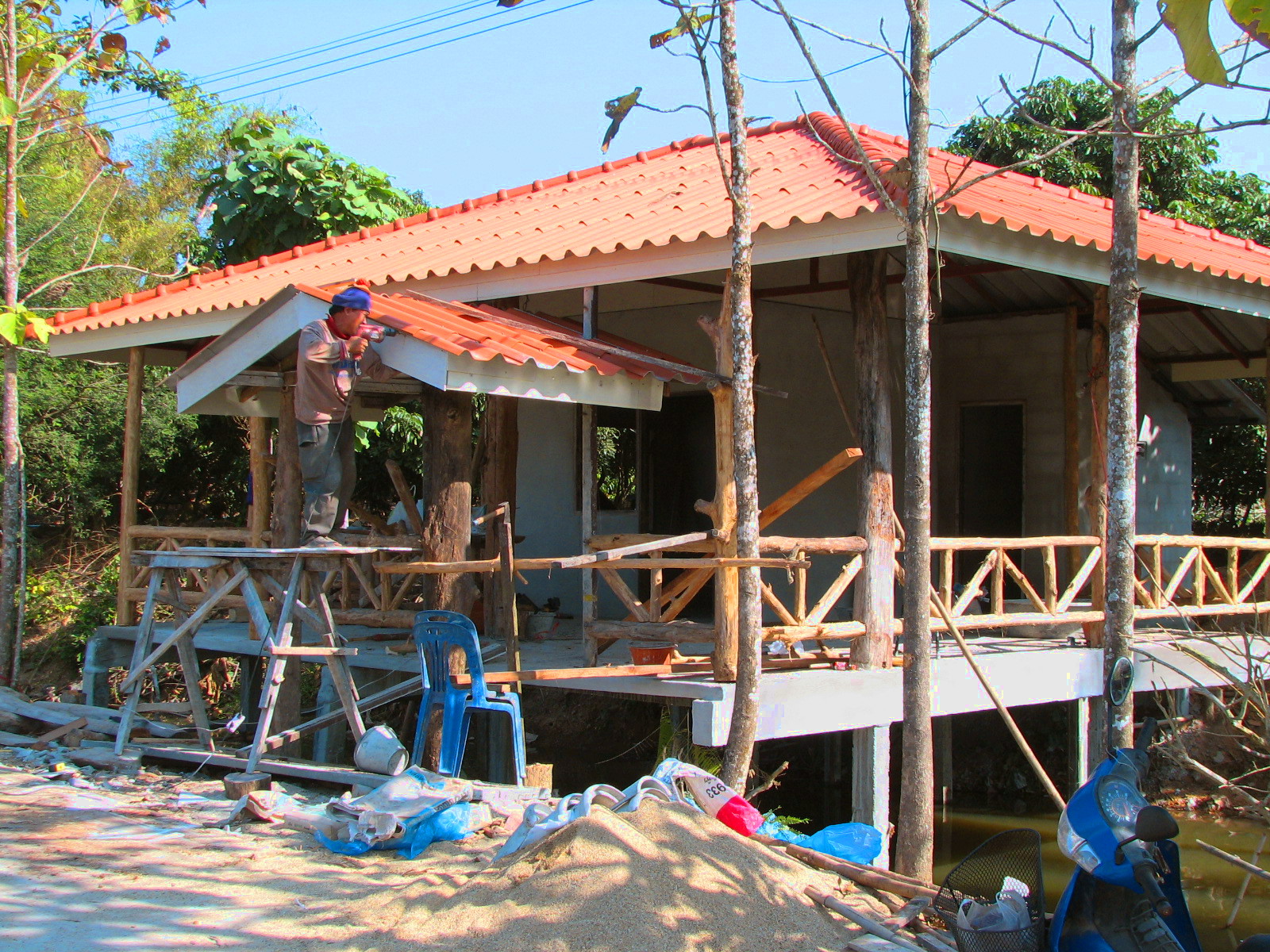
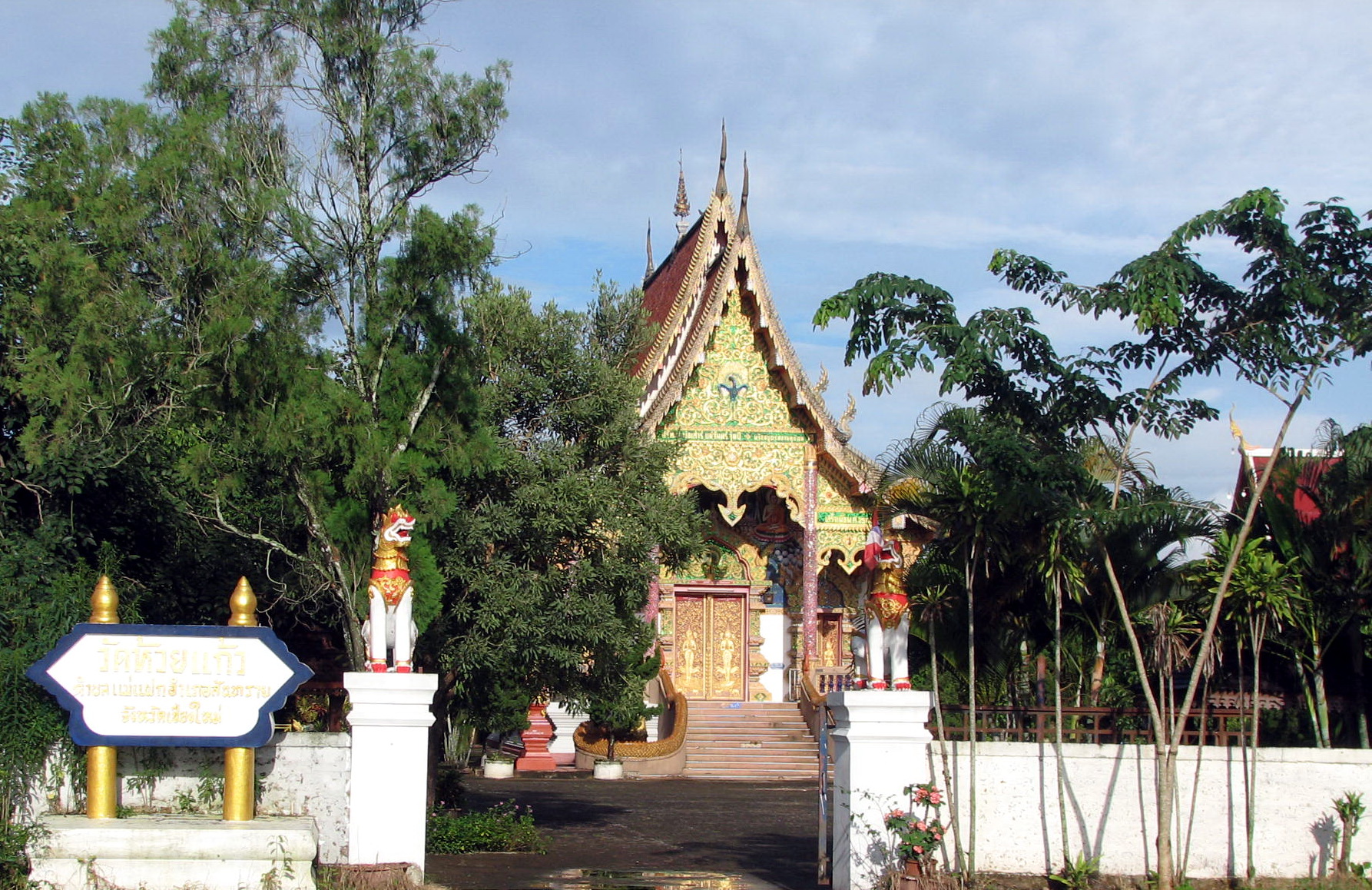
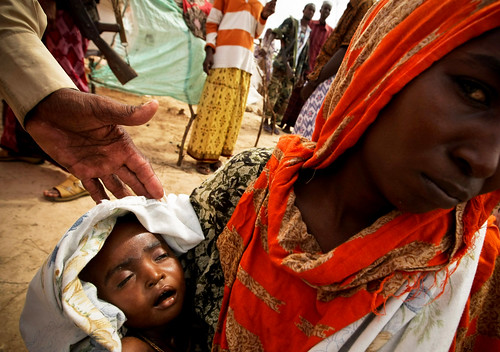
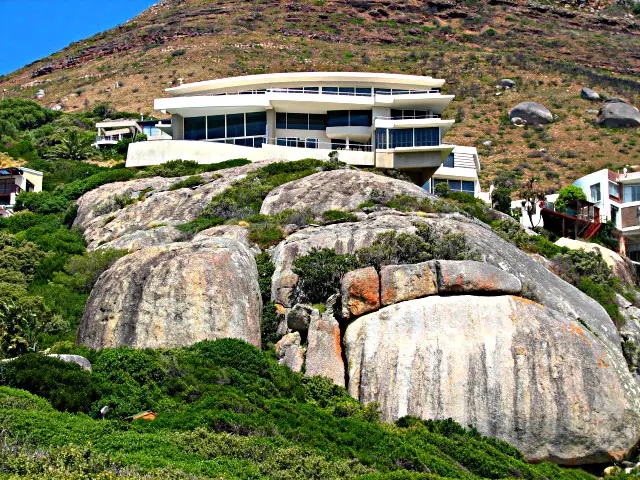
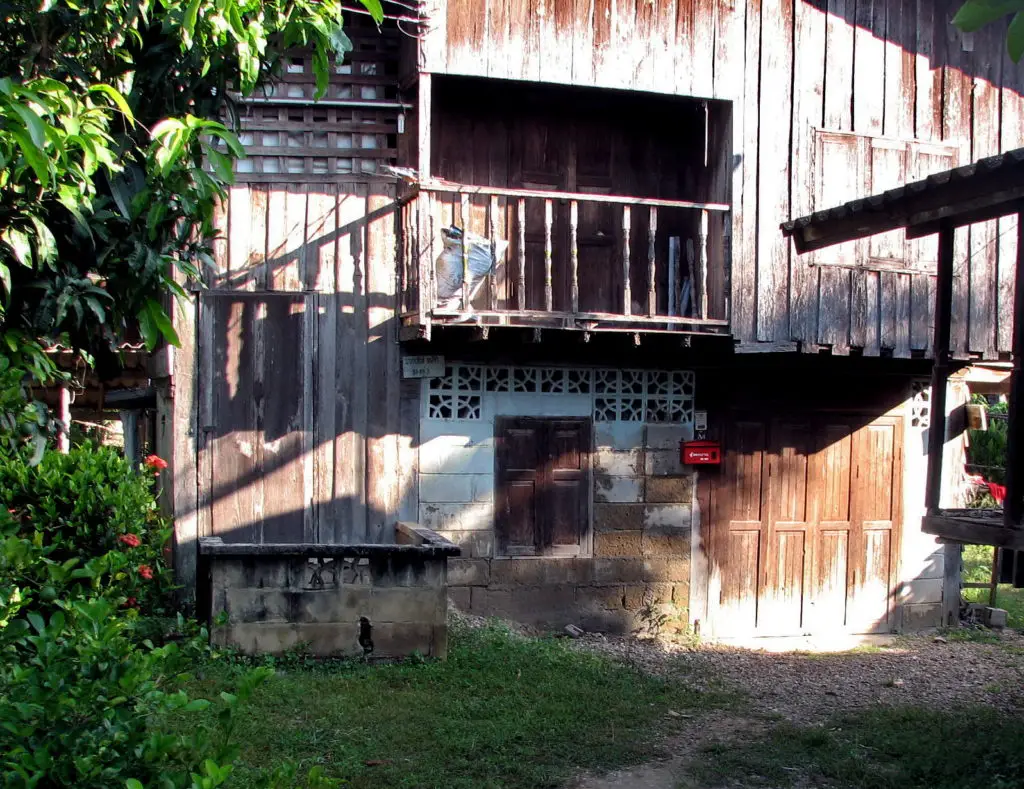
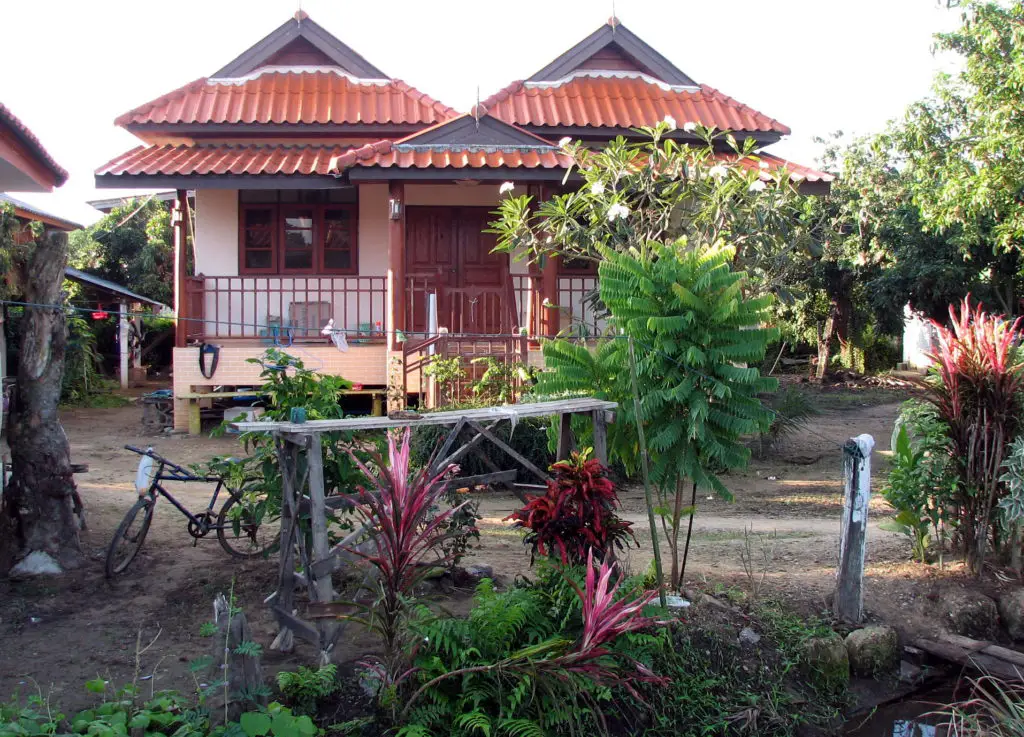
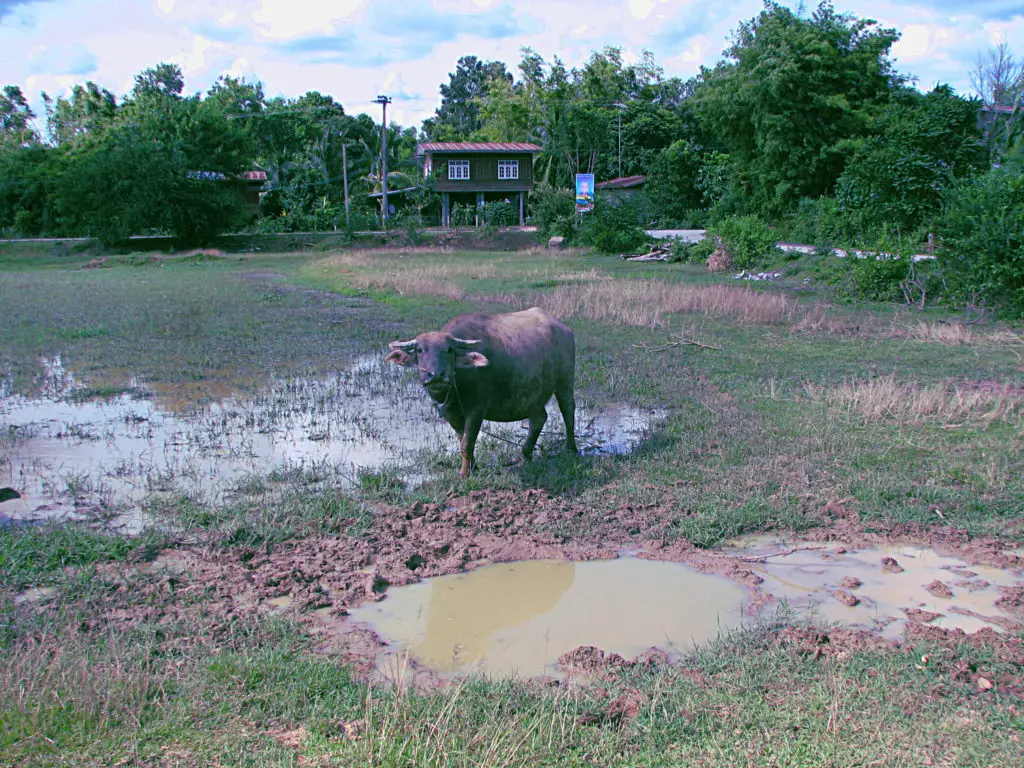
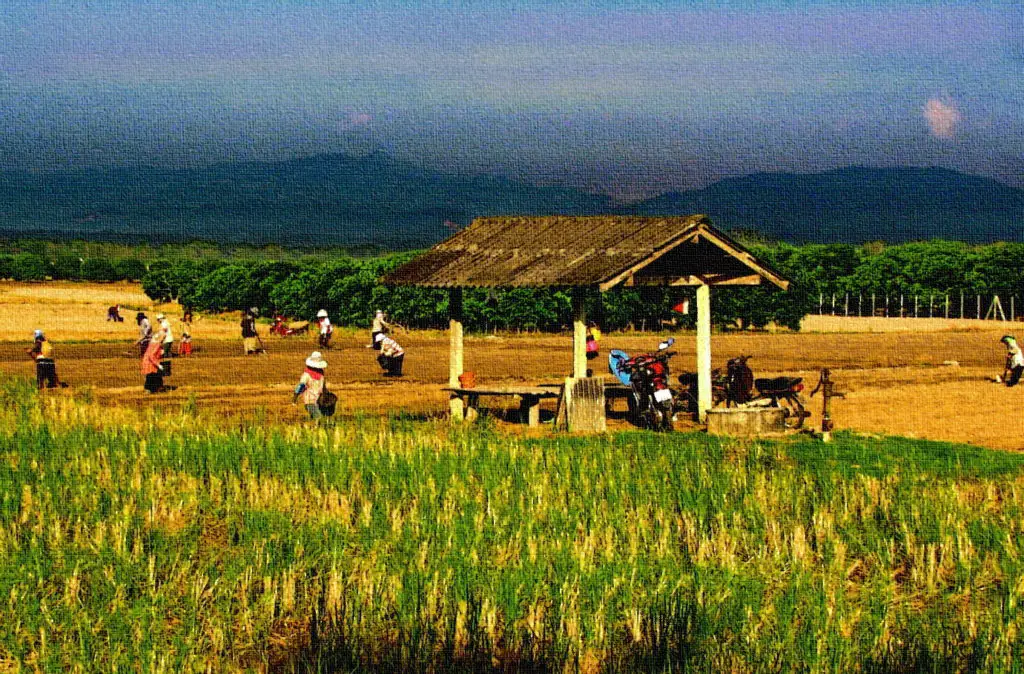
It was incredible and so glad I did it back then as re-visiting these countries and seeing the changes isn’t always great.
Laos was the most challenging as it only had a 30km stretch of sealed road north/south from Vientiane. We hitched rides and travelled by whatever means we could. In 2 weeks only made it from Vientiane to Luang Prabang as this is how long it took for the journey.
That must have been some trip 30 years ago. The roads must have been scary.
Actually, I was just thinking that the first time I was in Thailand was 1985, but only spent several days in Bangkok.
In 1989 is when I travelled overland through Malaysia, Thailand, and Laos, and all 3 countries were very different back then.
You got to Thailand long before me. I can only guess at what it was like in 1989. You are right. I’m sure the Rohingyas wouldn’t agree. But it’s true, as it is also true that not all Buddhists adhere to all the tenets of the way they follow, just like many Christians, Muslims, Jews and the rest don’t. Thank you for commenting. I can claim credit for ten, but not all, of the photos.
Forgot to mention, your photos are beautiful!
Interesting read. I first visited Thailand in 1989 then many more times following, even volunteering for a few months a couple of times.
I’ve noticed such a change over the decades with prosperity as the main one. Sadly, with tourism and prosperity comes a loss of traditions.
Not sure if the Rohingya in Myanmar would agree with “Buddhism promotes peace and harmony in contrast to African tribalism”. Perhaps in contrast to African tribalism, but my view is that the colour of the robe doesn’t matter and no religion hasn’t got blood on its hands.
Thanks for commenting, Madeleine. I understand I have raised your curiosity and ‘What exactly caused Thailand’s economic growth…’. There are many factors and you would need to study Thailand’s history as the country at the heart of SE Asia, and SE Asia itself. Thailand is the only country of the 11 in ASEAN that has not been colonised by a foreign power, and it was clever in the way it handled alliances during WWII and the Vietnam War. While the countries around it (Myanmar, Laos, Vietnam and Cambodia) suffered from oppression and war, Thailand didn’t. It is the hub of SE Asia and tourism has been a major factor in its development, ironically sparked by the Vietnam war. Buddhism promotes peace and harmony in contrast to African tribalism. South Africa has 11 official languages. Thailand has 1, so unity is 11 times more likely. There are approximately 700 million people in SE Asia, nearly 10% of the world. I could go on, it’s a fascinating subject. I’m looking forward to your review. There are a few on the way. keep well.
Thank you for providing this window on SE Asia and how it compares to Africa. I can imagine that the abundance of food alone makes a huge difference, but I didn’t realize that modernization was a part of this picture. Clearly Thailand’s Buddhist background provides a sharp contrast to southern Africa. I’m curious to hear how health care (public or otherwise) fits into this picture. What exactly caused Thailand’s economic growth. Is it dependent upon tourism? And I agree with Cinda, the photos are fabulous!
Thank you, Pamela. I really appreciate constructive comments such as this.
My pleasure. Thanks for commenting. I always leave CM for the islands at end Jan, before the pollution gets too bad. Unfortunately, it now seems out of control and was the worst ever this year as the rains didn’t come until June. I have started the launch of a new trilogy series of novels, and the first book is a short story called The Only Witness. I’m giving it away. You are welcome to a copy, go here: https://jamoroki.com/the-only-witness-landing-page/
Hope to see you again soon
Thank you for this informative article. Your books and articles have helped shape my love and understanding of Thailand. We have visited each year for the last three years, and stay for the 60 day visa time frame. Although we have travelled to most corners of Thailand, our favourite place remains Chiang Mai. We have spent a good deal of time there, walking the streets and getting to know the people. We will be back there again January 2020.
So once again, thank you.
What a wonderfully informative article, Jamoroki. Much appreciated. We live in a world of corporate dictated journalism, and it is so refreshing to read articles and see pictures of what is happening in the real world. I hope not all the young people get seduced by the city life, as the backbone of the country is the farmer and food producers. All else revolves around them, really. Without food, we starve and die. Food production is a vital, valuable and noble profession. It should never be taken for granted or undervalued. As you have correctly pointed out, when the people step in and handle food production themselves, the country prospers under their mantle. Kudos to you for your continued support of the people, their safety and welfare.
Your compliments are swelling my head Cinda. You are too kind. Keep well. James
This was such an informative post and well illustrated. (Your cover photo could be on National Geographic)